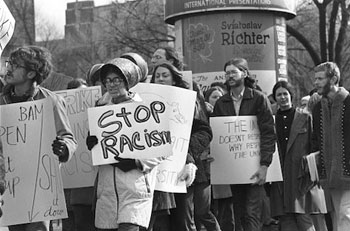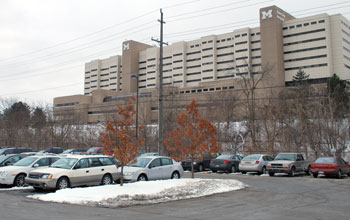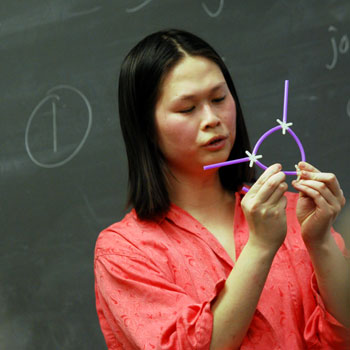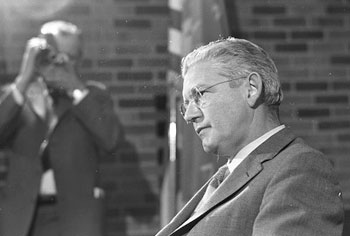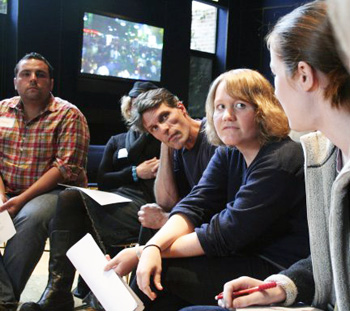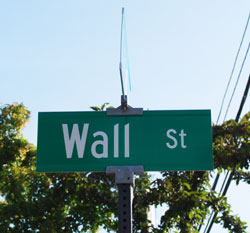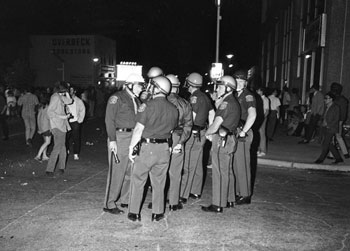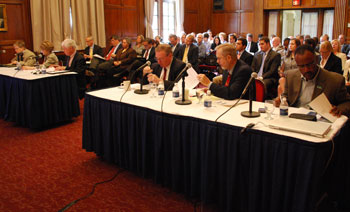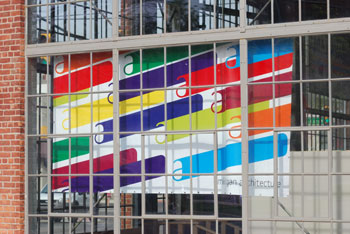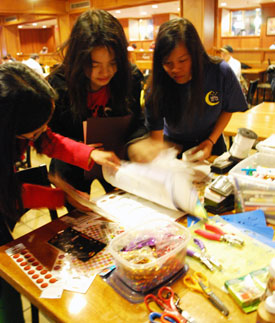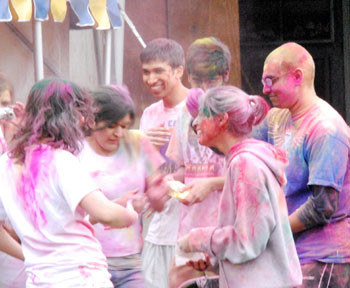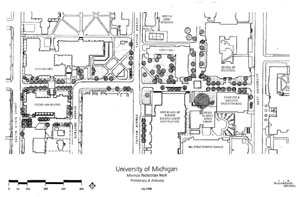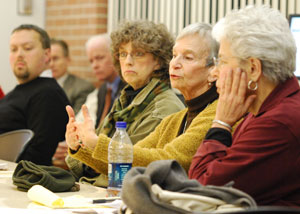UM Research Highlighted at Regents Meeting
University of Michigan board of regents meeting (Jan. 20, 2011): The university’s top research administrator, along with a faculty member who has successfully straddled the academic and entrepreneurial worlds, addressed regents at their January meeting about how university research is aiding economic development.

Stephen Forrest, left, talks with David Lampe before the start of the Jan. 19, 2011 University of Michigan board of regents meeting. Forrest, UM's vice president for research, gave a presentation on the university's research efforts. Lampe is vice president for communications. (Photos by the writer.)
Stephen Forrest, UM’s vice president for research and chair of the board for economic development agency Ann Arbor SPARK, described the concept of an “innovation pipeline,” with the input of funding and ideas yielding an output of jobs, prosperity and expanded opportunities for faculty and students. The process has leaks and clogs, he noted, but the university has strategically applied patches – citing as an example the Venture Accelerator program that launched this month.
And Jim Baker, director of the Michigan Nanotechnology Institute for Medicine and Biological Sciences, was on hand to embody the efforts of faculty who successfully translate research into economic development. Baker’s talk focused on the rewards of creating new businesses – he observed that one reason why students come to UM is to enhance their economic prospects and improve their lives. Baker talked about the importance of keeping those graduates in Michigan to aid in the state’s economic recovery – and doing that requires jobs. He noted that the four companies he has helped launch in Ann Arbor have brought in $160 million in investments and created 45 new jobs so far.
Regents took action on several items during the meeting, including approval of two projects related to the athletics department: A $52 million renovation and expansion of Crisler Arena – the second phase of a major overhaul of that facility, which was built in 1968; and a $20 million project to install video scoreboards at Michigan Stadium, Crisler Arena and Yost Ice Arena. David Brandon, UM’s athletic director, made a brief appearance at the meeting but did not address the regents publicly. And this month’s biggest athletic-related news at UM – that Brady Hoke was hired as head football coach – received only a mention as part of president Mary Sue Coleman’s opening remarks. He did not attend the meeting.
Seven people spoke during public commentary on a variety of topics. Among them were: (1) a call to reassess Fuller Road Station, a proposed parking structure and possible train station near UM’s medical campus; ( 2) questions about the medical leave of Ken Magee, executive director of UM’s Department of Public Safety (DPS); (3) thanks from the leader of the Ann Arbor Summer Festival for the university’s support of that annual event; (4) criticism of the use of live animals to train survival flight nurses; and (5) a plea for financial support for The Loyal Opposition to the Status Quo (LOSQ), a nonprofit launched to address disparities between African-Americans and Caucasians. [Full Story]





